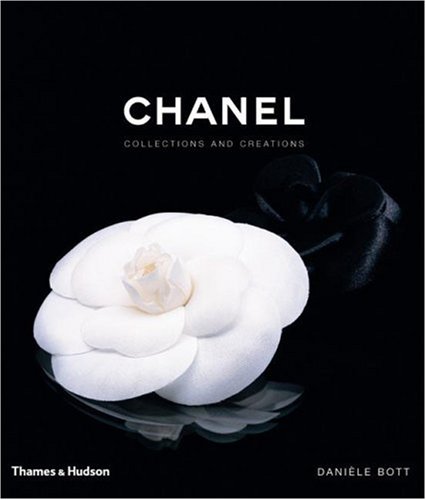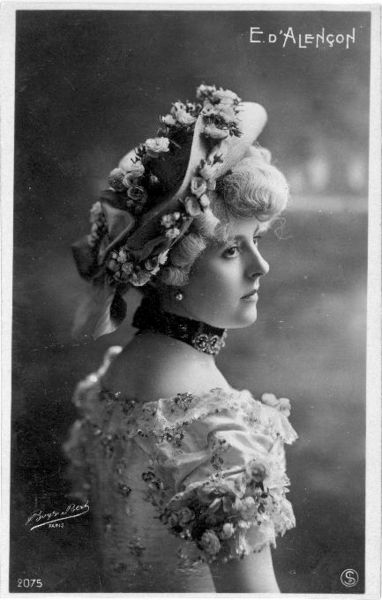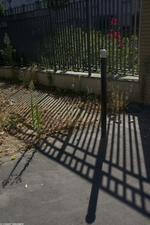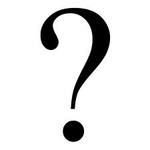Of Gabrielle Coco Chanel & Roses: Chanel No. 5 As The Anti-Rose Scent {Scented Thoughts} {Smell-The-Roses-Till-Valentine's Day Challenge - Day 20}

If one is to attempt to diagnose the causes behind rose perfumes going officially out of fashion in the course of the 20th century, notwithstanding exceptions such as Tea Rose by Perfumer's Workshop, Trésor by Lancôme, YSL Paris, (Guerlain Nahéma was not a success), one is tempted to turn one's gaze in the direction of Gabrielle Coco Chanel as one possible culprit. Chanel had an enormous influence on the redefining of the woman's silhouette and her self-perception as being modern, updated, dans le vent. Rose as fashion may have well ceased to exist with one of the utterances of Coco Chanel who never felt shy about pronouncing aesthetic diktats.
She claimed to hate natural flowers and instead pushed flowers cut out of material. She also pronounced real jewelry to be grotesque and pushed bold, fake costume jewelry. Would you wear real flowers? Ridiculous, so same thing for jewelry, she would snap.
If you walk in the streets of Paris today, you can still feel this principle at work. Very few Parisian women wear real jewelry, it is almost considered impolite it seems. It may be both tastefully Republican (egalitarian) and Chanel-esque not to give in to any nouveau-riche foibles. Of course, never mind that a Chanel costume jewelry piece today may cost more than gold jewelry. Never mind.The subtext seems to be that it is much more stylish to wear fake pieces, affirm style rather than money, and hide your heirloom jewelry where it belongs, in the recesses of your jewelry box and your consciousness (you will wear them internally or know that you can).
Real flowers in hair or in buttonholes are even more of a rarity as if people might be afraid to suddenly hear the sardonic laughter of Coco Chanel coming out of mouthpieces hidden in some street corners. How ridiculous! Real flowers! Ha, ha, ha! The Chanel police, somehow, has left its imprint and the violet vendors are only occasionally spotted in My Fair Lady.
Roses to her connoted of naturalness, too much so probably to merit her admiration. If you cannot improve on the perfection of the rose, is it really interesting to a creative mind? Chanel No. 5 may well rely on the magic of a superlative Rosa Centifolia cultivated in Grasse in fields reserved for the fashion house, this does not mean that it had not to be fully domesticated and stylized before being deemed suitable and couture.....

Before Chanel came of age and the creation of Chanel No. 5 (1921), women of her generation or slightly older were in the habit of wearing soliflores, rose being one of the most popular scents, as it has always been through the ages. It is sometimes hard to remember that Coco Chanel is a woman that was born in the 19th century, in 1883, grew in it, so much the 20th century bears her mark. Therefore, the conservative perfume culture background against which she would have wanted to go, would have been one where many women liked the idea of wearing a soliflore that would identify them: violet, rose, tuberose.... It was a time also where many women's names were flower names. Rose water was commonly used as a skin lotion. In 1906, Coty launched a modernized rose perfume, La Rose Jacqueminot, that can be seen as a transition perfume between the soliflores of old and the abstract floral compositions to be heralded by Chanel No. 5.
There was an ubiquity and conformism to the rose, a simplicity bordering on a lack of sophistication that might have made Chanel see it as emblematic of an era destined to be interred. At any rate, she had the rose in mind and targeted it when she said about Chanel No. 5 that it had to be so, "because a woman must smell like a woman and not like a rose." (parce qu'une femme doit sentir comme une femme et non comme une rose.)
As it turns out, No. 5 was inspired by Coco Chanel's desire to recreate two favorite smells: the good smell of the soap of her childhood as well as the body smell, the clean smell that emanated from a great courtesan and cabaret dancer of the time, Emilienne d'Alençon. She said about d'Alençon that "she smelled good, she smelled clean." (Elle sentait bon, elle sentait le propre.) Gabrielle Chanel wanted to recapture these impressions, while Beaux, the perfumer, wanted to recapture the freshness of the air hovering above Arctic lakes at night. Somehow, they met half-way on the idea of freshness.
The rose could therefore be present in her new, revolutionary perfume, Chanel No. 5, but never as a masking scent, never as an ingredient that would steal the show and make people forget that they were standing in front of a woman rather than a woman-flower. The idea that there exist grand-motherly smells may well have been encouraged by her views. She certainly then promoted the idea of a chasm existing between fresh, clean smells and outdated, heady, floral aromas, the rose in particular. The line of heirs to her intuitions is strong and we will have occasion to return to this topic in a series on fresh, clean perfumes.
Chanel No. 5 is the reverse therefore of everything that was embodied by a classic rose perfume. It is a rose that is abstracted. A rose disciplined by style not a rose that copies nature. Wearing a natural-smelling rose perfume would have probably amounted for Coco Chanel to wearing a gown made of sewn roses, an absurdity, and a suspiciously lazy one at that.
She also disliked pretty floral accords although another important inspiration for Chanel No. 5 was Quelques Fleurs d'Houbigant (1912). It is hard to know how it really smelled like at the time. The modern reformulation of it is very floral and fresh. A vintage version we have, having suffered from the ravages of time smells mostly of oakmoss and woods. It is said that she consistently picked samples of the perfume-to-be, Chanel No. 5, that smelled most like Quelques Fleurs, which also later gave birth to Chanel No. 22, one of the mods that was put aside at the time.
In the scent of the rose lies the risk of subjecting to its natural beauty. How does a designer, a perfumer make an imprint on the rose, offer his or her personal interpretation, turn it into art? The question is still relevant. Chanel just knew that her No. 5 had to be the anti-rose scent, one that would transcend an aesthetic canon of naturalness. She said to Ernest Beaux, the creator of Chanel No. 5,
"I do not want little touches of rose or lily of the valley. I am a creator, I therefore want a perfume that is constructed. It is a paradox. On a woman, a natural aroma smells artificial. Maybe a perfume with a natural smell must be created artificially."
"Je ne veux pas des petites touches de rose ou de muguet. Je suis une créatrice. Je veux donc un parfum qui soit construit. C'est un paradoxe. Sur une femme une odeur naturelle sent l'artificiel. Peut-être un parfum à odeur naturelle doit-il être créé artificiellement."
Chanel loved paradoxical statements. It nurtured her creative impulses. The rose had therefore to be sacrificed to her need for paradox and her intuition for modernity. If rose perfumes were officially out in certain fashionable circles in the 20th and 21st century, it of course continued to endure in many others. But somehow, traces remain of the anti-rose perfume position to this day. It may well be that Gabrielle Chanel was an active and influential proponent of this new sensitivity.









Very nice article!
And yet, Chanel has been pushing real jewelry for the past decade under designs of Gabrielle from the 20s-30s. There is therefore a contradiction.
But regarding flowers, they do adhere to the abstract and immaterial in every single one of their fragrances.
Thanks!
I am not sure I would call it a contradiction. They are entitled to re-interpreting the spirit of Coco Chanel. They even must as a creative brand. Moreover, she was complex enough herself to allow for many sides to show. I am sure that she was in fact very supple and shrewd and that she could say one thing and then if she changed her mind, say another. The main thing was to keep the creative juices flowing and keep it interesting.
Coco Chanel actually turned to precious jewellery in the 1930s as a reaction to the Wall Street Crash, with what you rightly pinpoint as her love of paradox. Something in the lines of: when we were rich the real thing was too gaudy, now that we're broke we need authenticity. The designs were done by Charles Hugo (a descendant of Victor Hugo) and presented in 1932.
Thank you for the note.
I caught a glimpse of her anti real flower and jewelry position in a documentary in which she was already an old lady. She came across as being deliciously peremptory and mercurial.
Hello,can you tell me please how much would it cost now half full of bottle chanel no.22 in original box bought aproximetly 1930 in paris.Many thanks.jana